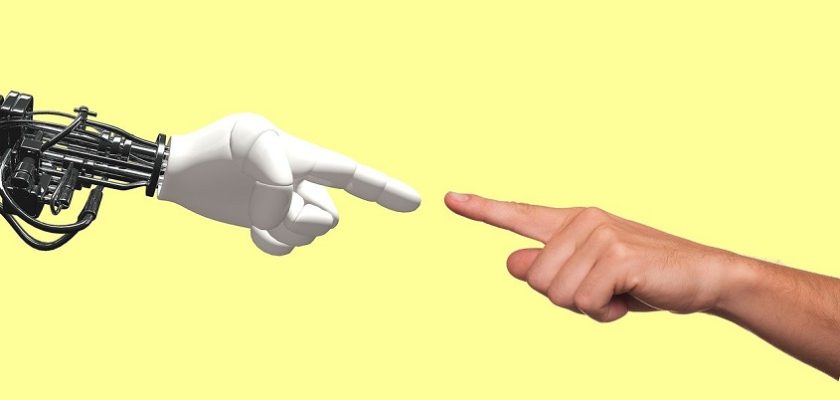The Role of Robots and Automation in Healthcare
- Posted on February 3, 2023
- By Vishakha Yadav
- Read 4 minutes

In recent years, the integration of robots and automation has brought about significant advancements in various industries, and healthcare is no exception. The healthcare landscape has witnessed a remarkable transformation with the utilization of robotics and automation, leading to improved patient care, enhanced efficiency, and transformative medical practices.
Robotic Surgery: Precision and Minimally Invasive Procedures
Robotic surgery has emerged as a groundbreaking technique in the field of healthcare. With the advent of advanced robotic systems, surgeons can now perform intricate procedures with enhanced precision and control. These robots, operated by skilled surgeons, offer greater dexterity, magnified vision, and precise movement capabilities, allowing for minimally invasive surgeries. This revolutionary approach results in reduced patient trauma, faster recovery times, and improved surgical outcomes.
Robotic surgery systems such as the da Vinci Surgical System have been widely adopted across various surgical specialties, including urology, gynecology, and general surgery. The system provides surgeons with a high-definition 3D view of the operating field and robotic arms that can replicate their movements with utmost precision. This level of precision enables surgeons to perform complex procedures with smaller incisions, reducing the risk of complications and post-operative pain for patients.
Automated Diagnostics: Accelerating Accuracy and Efficiency
Automation has significantly expedited the diagnostic process in healthcare. Advanced algorithms and machine learning techniques enable automated diagnostics, aiding medical professionals in making more accurate and timely assessments. Automated diagnostic systems can analyze vast amounts of patient data, identify patterns, and generate comprehensive reports, assisting healthcare providers in making informed decisions swiftly. By streamlining the diagnostic process, automation minimizes errors, reduces wait times, and enhances overall efficiency.
In addition to analyzing medical images, automated diagnostic systems can also interpret laboratory test results, monitor vital signs, and predict disease progression based on historical data. By leveraging the power of artificial intelligence, these systems can provide valuable insights to healthcare professionals, enabling them to make more precise diagnoses and develop personalized treatment plans for patients. Automated diagnostics have the potential to revolutionize healthcare by improving diagnostic accuracy, optimizing resource utilization, and ultimately saving lives.
Telemedicine: Bridging Gaps and Enhancing Accessibility
Telemedicine, powered by automation and digital technologies, has revolutionized the delivery of healthcare services. It enables medical consultations and remote monitoring, breaking down geographical barriers and improving accessibility, especially for underserved communities. Through telemedicine, patients can receive timely medical advice, consultations, and even remotely manage chronic conditions. Robots equipped with cameras and sensors facilitate virtual examinations, allowing healthcare providers to offer remote care efficiently.
Telemedicine has become particularly vital in rural areas where access to specialized healthcare services may be limited. Patients can now connect with healthcare professionals through video conferencing, reducing the need for long-distance travel and the associated costs. Moreover, telemedicine enables remote monitoring of patients with chronic conditions, ensuring timely interventions and reducing hospital readmissions. The integration of robots and automation in telemedicine has not only improved healthcare access but also enhanced patient satisfaction and outcomes.
Robotic Assistance: Supporting Healthcare Professionals
Robots are increasingly being employed to support healthcare professionals in various clinical settings. These robotic assistants can perform repetitive tasks, freeing up medical personnel’s time to focus on more complex and critical aspects of patient care. For example, robots can be used for medication dispensation, inventory management, and logistics within healthcare facilities. By taking over mundane tasks, robotic assistance enhances productivity and allows healthcare professionals to dedicate more time to direct patient interaction and care.
Robotic assistance extends beyond administrative tasks and can also assist in delicate procedures such as the delivery of medication during surgeries. Automated drug delivery systems ensure precise dosing and reduce the risk of human error. Furthermore, robots equipped with artificial intelligence algorithms can monitor patient vital signs and detect early warning signs, alerting healthcare professionals in real-time. These advancements in robotic assistance have the potential to improve patient safety, streamline workflows, and optimize resource allocation within healthcare institutions.
Rehabilitation and Therapy: Personalized and Targeted Interventions
Robotic technology has brought significant advancements in the field of rehabilitation and therapy. Robots equipped with sensors and actuators can aid in physical therapy and assist patients in regaining their motor functions. These devices provide personalized interventions, allowing therapists to tailor treatment plans according to individual needs. Through repetitive and targeted exercises facilitated by robots, patients can experience improved recovery outcomes and regain their independence more efficiently.
For individuals with mobility impairments, robotic exoskeletons offer the potential for enhanced mobility and independence. These wearable devices provide support to the limbs, enabling individuals to walk or perform activities they previously couldn’t. Additionally, robotic devices for neurorehabilitation have shown promising results in helping patients regain motor skills following neurological injuries or disorders.
By incorporating robotic technology into rehabilitation and therapy, healthcare providers can offer more personalized and targeted interventions, leading to better patient outcomes and an improved quality of life for individuals undergoing rehabilitation.
Conclusion
As technology continues to advance, robots and automation are playing an increasingly prominent role in the healthcare industry. From precision surgeries and automated diagnostics to telemedicine and robotic assistance, these technologies are transforming the way healthcare is delivered. By harnessing the power of robotics and automation, healthcare providers can enhance patient care, improve efficiency, and ultimately save lives. Embracing these technological advancements is crucial to keeping up with the evolving demands and challenges of the healthcare landscape.
